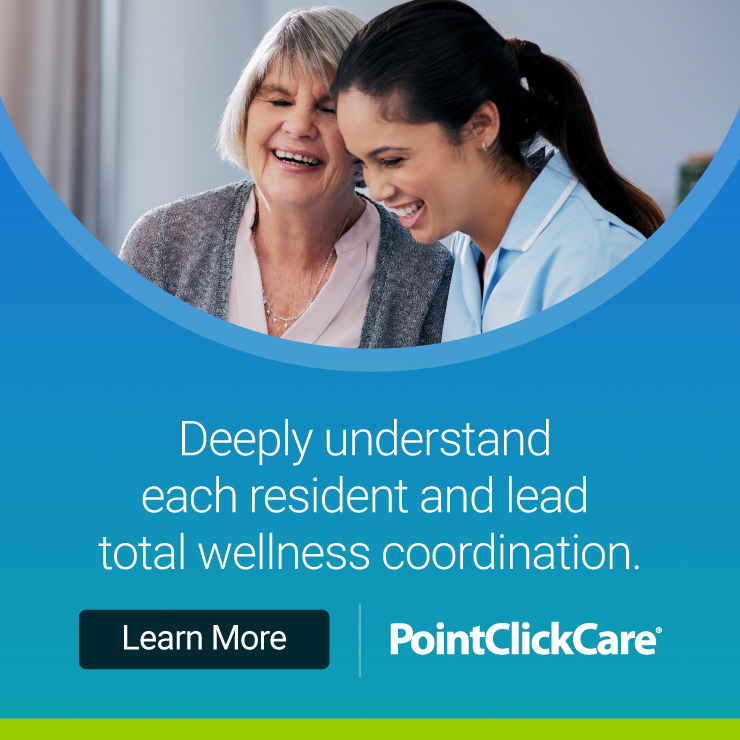Talk about an industry disrupter, the coronavirus pandemic has been that in spades. And it leaves senior living providers confronting a very changed and challenging future. Colin Milner, founder and CEO of the International Council on Active Aging (ICAA), along with Bob Kramer, formerly of NIC; Ken Dychtwald of AgeWave; and former U. S. Surgeon General Dr. Richard Carmona, organized a task force and published a White Paper titled Creating A Path Towards the ‘Next Normal’ in Senior Living. Colin detailed their recommendations in an interview with Podcast Producer Pam McDonald. You’ll find Part 1 here. Part 2 continues describing the strategies recommended for moving forward. The following are some of the interview’s significant takeaways. You can listen to the entire podcast HERE.
Six Key Recommended Strategies for Moving Ahead Post-Pandemic (Continued):
- Fourth is embracing of technology, and on a much broader scale to increase connections, aid efficiency, and optimize health. Such as the rapid adoption of telehealth and tele-wellness, where people are utilizing wellness over the phone or over Zoom to keep residents engaged. To help them manage some of the conditions that they have. Having a hybrid model that’s half online, half in person. If we need physical distancing, how do you serve individuals online?
- Fifth, really establishing a culture of positive aging. What we’ve seen with the media is a lot of negativity. It will bode well for us to focus on positive aging framed by wellness so that it is experiential. No one really wants to live a life that is not filled with experiences. Really what life is all about is experiences. When you’re on your deathbed, what you are reflecting on are the people who you’ve been with, and the experiences that you’ve had with them.So how do we actually continue to enhance those experiences through all the various elements of wellness to keep people well and to help people keep themselves well? And, when residents are coming in, we need to be asking them how they’re going to contribute to the community, as opposed to “we’re just going to do everything for you.”We certainly also want to counter ageism. That is part of creating the positive aging framework, within your own staff, within your own residents, within families, within everyone that comes in contact with the community, and also within the media. I would never use terminology like “heads in beds”, those kinds of things. I think they’re really poor ways of looking at your residents. Your residents are people. And so how do you help to humanize an individual instead of de-humanize them?
- The last key strategy — probably the biggest — is to update the perceptions of senior living to reinforce this new value proposition that we’re offering all of these different elements to help someone lead a better quality of life in a safer environment. Families will feel secure with their decision to support their mother’s or father’s move. Really creating a different perception of what aging and senior living is all about.The first example I think of is about people’s capabilities. Stop looking at older adults as damaged goods that need nothing but assistance. Look at how you can help them assist themselves, if possible. Ask, how can I bring out the inner soul of that individual, as opposed to just simply “take care” of them, like give them a bedpan. How do we make life livable and enjoyable? That’s really what it’s about, so people will be excited about moving into a community as opposed to apprehensive.People are more capable if their functional capacity is higher. So, somebody who’s in a wheelchair would be in a walker. Or somebody in a walker could use a cane. Someone that has a cane is now walking independently — a progression backward. Not everybody. But really helping people regain that capacity so they can enjoy life as opposed to just simply “that’s it; take care of me.” I believe that society needs to create a platform for people to be able to try and take care of themselves as best as possible.
A New Kind of Consumer
The problem is when people go, “No, we’ve always done it this way. We know there are new consumers, but they’re coming in for this.” Yes, but what’s happening is they’re coming in later and later with more acute conditions. And one day that’s just going to condense to the point that someone is going to move in for a week or two and that’s it. It will be like a hospital, which is how some people view some of the communities.
I’m not saying that there is not a place for care. There absolutely is. But I know if I were moving into a community, I would have a little list of questions. How are you going to help me in lockdown? How am I going to be able to stay active and engaged? How am I going to be able to be safe? Are you going to be transparent with your communications with me, as opposed to not telling me anything, which some communities have been doing, unfortunately? There’re some basic things that the consumer is going to be looking for and we need to address them like any good business.
Commitment to Move Forward
In order to start moving toward this kind of future the first thing that’s needed is commitment. Because if they don’t have the commitment to fulfill all of the elements, not just of the task force report, but of where the consumer is moving, they’re going to be challenged. Bob Kramer, Ken Dychtwald, and the former U. S. Surgeon General Dr. Richard Carmona were part of the panel that opened this meeting. And it was loud and clear that the consumer of tomorrow absolutely isn’t going to be the consumer of today. We’ll need a commitment to helping people fulfill their lives and not just care for individuals.
So, it starts with that commitment to take a big shift, then you need to create your plan, and fulfill it. That planning includes everything from the environment that you create, the individuals that you hire, the marketing and the way you position it, to how you operate it. All of the elements of today’s business but refocusing them; create a revised culture that is more applicable to today’s consumers’ desires.
It Also Matters to Your Bottom Line
By the way, the more that someone can take care of themselves, the less expense there is. Which means we might be able to adjust to the middle market that people are talking about. If you have a community where people are engaged, and you provide service, therapy, or care on-demand, as opposed to it being incorporated in the community operations, your costs are probably less. Then your model is more open to shifting to address this. That’s some of the things that we’ve already started to see happen.
This is going to be much more appealing to a staff of millennials and the generations after them. Look at the computer industry. Look at Apple. Apple’s funky. Apple does new things, they’re constantly innovating as are others. Why aren’t we? And, let me be clear, there are absolutely some groups that are very innovative, but we’re talking about an industry. What we’d like to see is more innovation across the whole industry, things like robotics, artificial intelligence, all of these things come into play. Not being innovative is going to cost you dearly.
What’s Next?
With COVID-19, we see people purchasing robots to actually go and deliver items to minimize infectious disease or control infections. After the pandemic, will I continue to use those robots? How will I use those robots? Will residents have gotten used to the robots so it’s not a big deal anymore? There are all these changes and we just need to look at which ones impact us and that we want to engage with. Not everybody’s going to do the same thing, but there are going to be some baseline items such as safety, well buildings, and the six elements that I mentioned that really set the stage for how you move forward.
Spread the Word
I think the life of this guide all depends on the industry. Now, the question is what do you, as a part of the industry, do to utilize it, to share it with your staff, to share it with your colleagues? One of the things that we asked of all of our task force members is to share it as widely as possible. Put it on their website if they want to. We certainly are reaching out to the media, trying to get the word out there.
We have had a variety of different media outlets download the report. It’s been downloaded 4,000 times in just over a week-and-a-half. The CDC has downloaded it. It’s been praised by the World Health Organization. So, our goal is to get it out there, so people start to implement it and talk about it. It can cause a significant shift within our industry. At least that’s our goal.
Possibilities
We want to see what people are doing with it and we will go back to task force members within six-months to see what they’ve done. ICAA will be looking to see if there are elements we will embrace and shift our offerings. As an example, do we now have a training course on how to become an online wellness instructor, as opposed to just a wellness instructor? Who knows? But those are just things to do to address where the industry could be.
I think we have impacted a lot of people’s lives for the positive. There are some bad players out there, but the pandemic is going to show them up. Every industry has them. But for those who care about their residents, this White Paper is just simply helping them see where things are going. We need to look beyond the present. One day we’re going to put our head up and go, “Oh, where are we?” We need to start doing that now.
We’re just letting people know. It isn’t a great secret. It’s free, it’s open access. Here it is. This is 154 of your peers who own or operate over 8,000 communities sharing with you where they see the future going. You may not agree on all of these things, but there’s something in here for you. One or two or three or more of these items that could help change either your residents’ lives or your organization’s operations for the better. Click HERE to download the White Paper.
These takeaways have been lightly edited for space and style.







